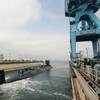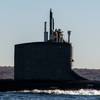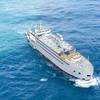The National Transportation Safety Board and the U.S. Coast Guard have concluded a new agreement setting out each agency’s role in the investigation of major marine shipping accidents.
With the Memorandum of Understanding (MOU) signed yesterday by NTSB Chairman Marion C. Blakey and Admiral Thomas Collins, Commandant of the Coast Guard, the two agencies have resolved a long-standing uncertainty over how to determine which will lead the investigation of a major marine accident. The new agreement gives NTSB the right to elect to lead investigations of accidents that threatened high loss of life or substantial property damage.
Major accidents are broadly defined as involving: the loss of six or more lives; the loss of a mechanically propelled vessel of 100 or more gross tons; property damage estimated at $500,000 or more; or serious environmental damage due to a hazardous materials release.
“This week’s agreement is a milestone,” said Chairman Blakey, “ I welcome the opportunity it provides for the Safety Board and the Coast Guard to work together more closely and effectively to improve marine safety, limit duplication of effort and the expenditure of federal resources, and further strengthen public confidence in our agencies.” Blakey expressed appreciation for the Coast Guard’s cooperation in working out the terms of the MOU.
The agreement is in response to legislation requiring the two agencies to clarify when the NTSB will lead a marine investigation and to develop standards for determining if an accident involves significant issues related to the Coast Guard’s performance of its safety functions that may require independent review. It replaces an earlier agreement dating from 1981.
For the most part, the Safety Board expects to concentrate its activities on passenger vessels and those marine casualties that risked or threatened high loss of life. Specifically, the Board may elect to lead an investigation of:
A passenger vessel accident (fire, collision, grounding, sinking) that places those on board at serious risk;
A vessel accident that seriously threatens port facilities, for example, an allision with a permanently moored vessel or high occupancy waterfront facility;
A cargo vessel accident that involves three or more fatalities; or
A multimodal marine accident that results in fatalities.
In these cases, when the Safety Board elects to take the lead, the investigations will be conducted under established NTSB rules and procedures, with the Coast Guard participating as a “party” to the investigation.
Sponsored Content
Safer Starts Here: Build Ships, Protect Crews

Subscribe for
Maritime Reporter E-News
Maritime Reporter E-News is the maritime industry's largest circulation and most authoritative ENews Service, delivered to your Email five times per week









